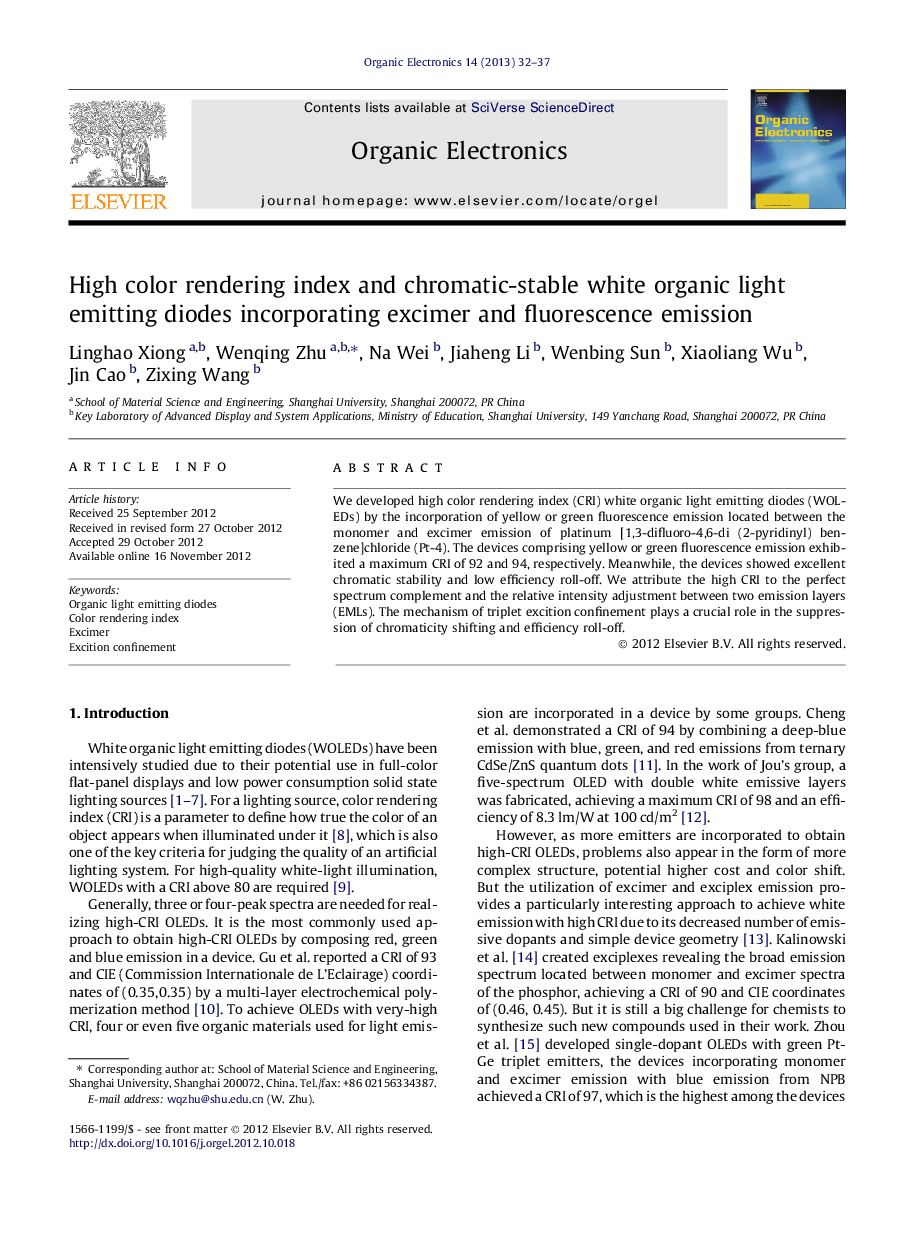| Article ID | Journal | Published Year | Pages | File Type |
|---|---|---|---|---|
| 1263932 | Organic Electronics | 2013 | 6 Pages |
We developed high color rendering index (CRI) white organic light emitting diodes (WOLEDs) by the incorporation of yellow or green fluorescence emission located between the monomer and excimer emission of platinum [1,3-difluoro-4,6-di (2-pyridinyl) benzene]chloride (Pt-4). The devices comprising yellow or green fluorescence emission exhibited a maximum CRI of 92 and 94, respectively. Meanwhile, the devices showed excellent chromatic stability and low efficiency roll-off. We attribute the high CRI to the perfect spectrum complement and the relative intensity adjustment between two emission layers (EMLs). The mechanism of triplet excition confinement plays a crucial role in the suppression of chromaticity shifting and efficiency roll-off.
Graphical abstractWe developed high color rendering index (CRI) white organic light emitting diodes (WOLEDs) by the incorporation of yellow or green fluorescence emission located between the monomer and excimer emission of platinum [1,3-difluoro-4,6-di (2-pyridinyl)benzene]chloride (Pt-4). The devices comprising yellow or green fluorescence emission exhibited a maximum CRI of 92 and 94, respectively. Meanwhile, the devices showed excellent chromatic stability and low efficiency roll-off.Figure optionsDownload full-size imageDownload as PowerPoint slideHighlights► We developed high-CRI and chromatic-stable white OLEDs. ► The incorporation of fluorescence with excimer emission results in the high CRI. ► Triplet excition confinement suppresses color shifting and efficiency roll-off. ► The interlayer plays a crucial role in the triplet excition confinement.
